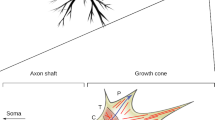Abstract
In vitro neuronal cultures embodied in a closed-loop control system have been used recently to study neuronal dynamics. This allows the development of neurons in a controlled environment with the purpose of exploring the computational capabilities of such biological neural networks. Due to the intrinsic properties of in vitro neuronal cultures and how the neuronal tissue grows in them, the ways in which signals are transmitted and generated within and throughout the culture can be difficult to characterize. The neural code is formed by patterns of spikes whose properties are in essence nonlinear and non-stationary. The usual approach for this characterization has been the use of the post-stimulus time histogram (PSTH). PSTH is calculated by counting the spikes detected in each neuronal culture electrode during some time windows after a stimulus in one of the electrodes. The objective is to find pairs of electrodes where stimulation in one of the pairs produces a response in the other but not in the rest of the electrodes in other pairs. The aim of this work is to explore possible ways of extracting relevant information from the global response to culture stimulus by studying the patterns of variation over time for the firing rate, estimated from inverse inter-spike intervals, in each electrode. Machine learning methods can then be applied to distinguish the electrode being stimulated from the whole culture response, in order to obtain a better characterization of the culture and its computational capabilities so it can be useful for robotic applications.



Similar content being viewed by others
References
Blankenship AG, Feller MB (2010) Mechanisms underlying spontaneous patterned activity in developing neural circuits. Nat Rev Neurosci 11(1):18
Schmidt KE, Singer W, Galuske RAW (2004) Processing deficits in primary visual cortex of amblyopic cats. J Neurophysiol 91(4):1661–1671
Glazewski S, Fox K (1996) Time course of experience-dependent synaptic potentiation and depression in barrel cortex of adolescent rats. J Neurophysiol 75(4):1714–1729
Xydas D, Norcott D, Warwick K, Whalley B, Nasuto S, Becerra V, Hammond MW, Downes J, Marshall S (2008) Architecture for neuronal cell control of a mobile robot. In: Bruyninckx H, Přeučil L, Kulich M (eds) European Robotics Symposium 2008. Springer, pp 23–31
Braitenberg V (1984) Vehicles: experiments in synthetic psychology. The MIT Press, Cambridge
Tessadori J, Bisio M, Martinoia S, Chiappalone M (2012) Modular neuronal assemblies embodied in a closed-loop environment: toward future integration of brains and machines. Front Neural Circuits 6:99
Novellino A, D’Angelo P, Cozzi L, Chiappalone M, Sanguineti V, Martinoia S (2007) Connecting neurons to a mobile robot: an in vitro bidirectional neural interface. Comput Intell Neurosci 2007 (Article ID 12725). https://www.hindawi.com/journals/cin/2007/012725/cta/
Warwick K, Xydas D, Nasuto SJ, Becerra VM, Hammond MW, Downes JH, Marshall S, Whalley BJ (2010) Controlling a mobile robot with a biological brain. Def Sci J 60(1):5–14
DeMarse TB, Wagenaar DA, Blau AW, Potter SM (2001) The neurally controlled animat: biological brains acting with simulated bodies. Auton Robots 11(3):305–310
Bakkum DJ, Shkolnik AC, Ben-Ary G, Gamblen P, DeMarse TB, Potter SM (2004) Removing some ‘A’ from AI: embodied cultured networks. In: Iida F, Pfeifer R, Steels L, Kuniyoshi Y (eds) Embodied artificial intelligence. Lecture notes in computer science, vol 3139. Springer, Berlin, pp 130–145
Tessadori J, Venuta D, Kumar SS, Bisio M, Pasquale V, Chiappalone M (2013) Embodied neuronal assemblies: a closed-loop environment for coding and decoding studies. In: 6th International IEEE/EMBS Conference on Neural Engineering (NER), pp 899–902
Jimbo Y, Tateno T, Robinson HP (1999) Simultaneous induction of pathway-specific potentiation and depression in networks of cortical neurons. Biophys J 72(2):670–678
Ester M, Kriegel H-P, Sander J, Xu X (1996) A density-based algorithm for discovering clusters in large spatial databases with noise. In: Proceedings of the second international conference on knowledge discovery and data mining (KDD-96). AAAI Press, pp 226–231
Rosenblatt F (1957) The perceptron: a perceiving and recognizing automaton. Techreport 85-460-1, Cornell Aeronautical Laboratory
von Neumann J (1952) Probabilistic logics and the synthesis of reliable organisms from unreliable components. Lectures delivered at the California Institute of Technology. Notes by R. S. Pierce
Jimbo Y, Kawana A, Parodi P, Torre V (2000) The dynamics of a neuronal culture of dissociated cortical neurons of neonatal rats. Biol Cybern 83(1):1–20
Acknowledgements
We want to acknowledge Programa de Ayudas a Grupos de Excelencia de la Región de Murcia, from Fundación Séneca, Agencia de Ciencia y Tecnología de la Región de Murcia.
Author information
Authors and Affiliations
Corresponding author
Ethics declarations
Conflict of interest
The authors declare that they have no conflict of interest.
Ethical approval
All the experimental procedures were conformed to the directive 2010/63/EU of the European Parliament and the RD 53/2013 Spanish regulation, and approved by the Miguel Hernandez University Committee for Animal Research with reference number UMH.IB.EFJ.03.13. In addition, Directorate-General for Agricultural Production and Livestock of Generalitat Valenciana, Spain, authorized these procedures with code 2014/VSC/PEA/00110.
Additional information
Publisher's Note
Springer Nature remains neutral with regard to jurisdictional claims in published maps and institutional affiliations.
Rights and permissions
About this article
Cite this article
Val-Calvo, M., Álvarez-Sánchez, J.R., Alegre-Cortés, J. et al. Frequency variation analysis in neuronal cultures for stimulus response characterization. Neural Comput & Applic 32, 5027–5032 (2020). https://doi.org/10.1007/s00521-018-3942-y
Received:
Accepted:
Published:
Issue Date:
DOI: https://doi.org/10.1007/s00521-018-3942-y




